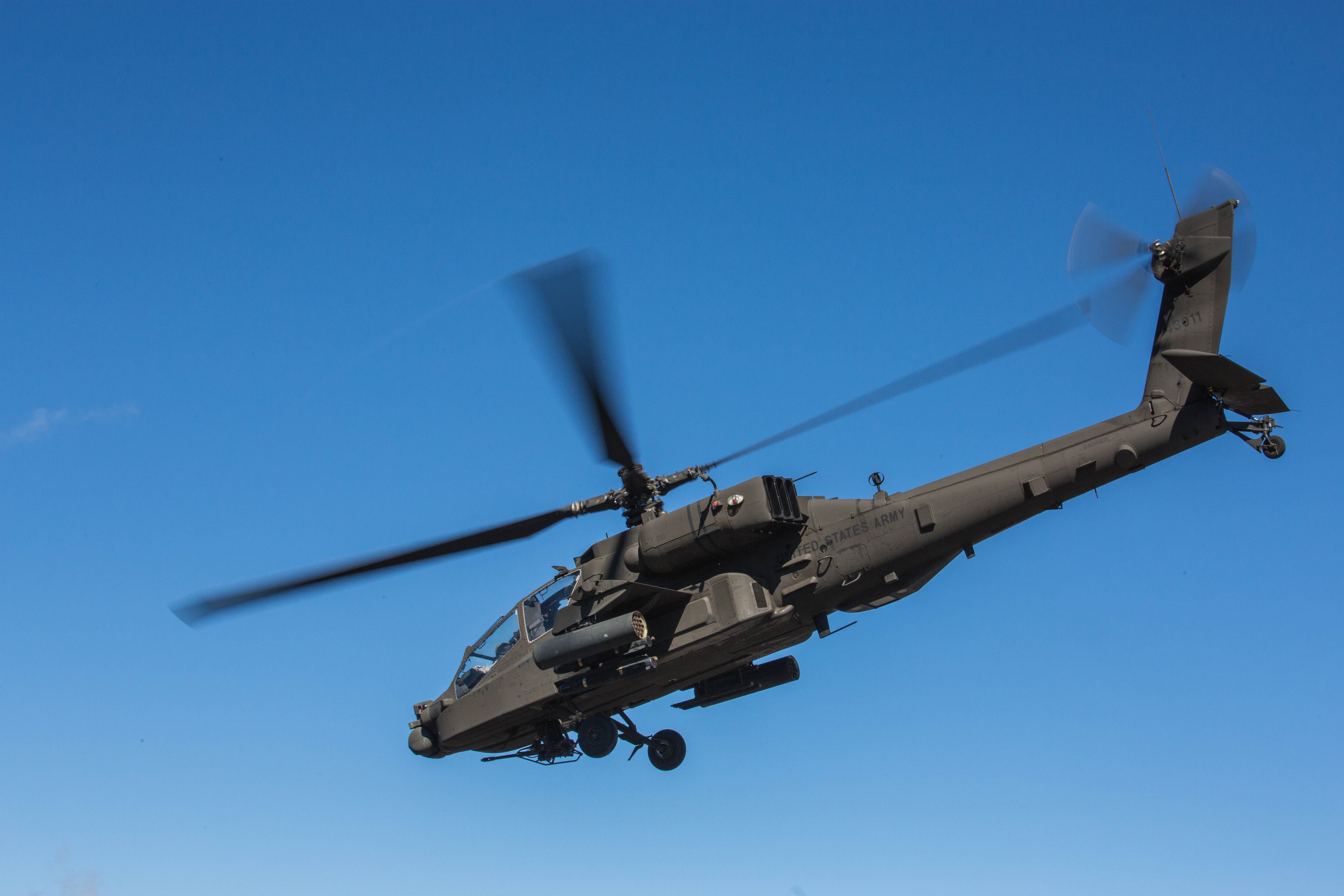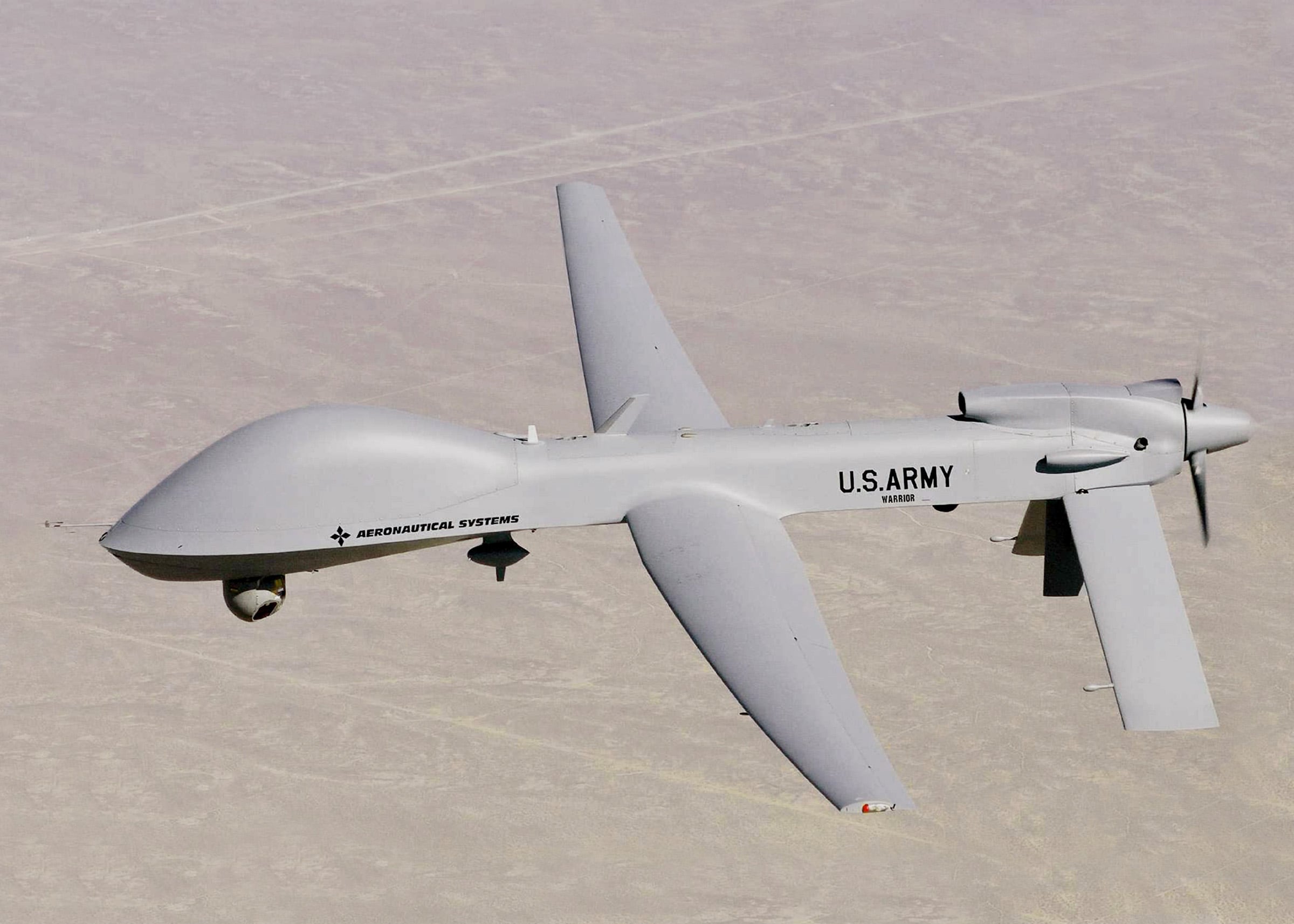Even though more than 45 percent of the Army's budget request for next year is dedicated to paying for soldiers, the service is also pushing forward with some high-tech and heavy-duty purchases.
The fiscal 2016 budget request, rolled out Monday, includes $16.1 billion for procurement and modernization — that's a $2.2 billion increase from fiscal 2015.
The 2016 request focuses on aviation modernization and science and technology programs.
"Once readiness is lost, it takes time to gain it back," said Maj. Gen. Thomas Horlander, the director of the Army budget. "The nation needs enough soldiers trained and ready for decisive action."
He added that "delayed or reduced funding in our modernization" puts the Army's overmatch capabilities at risk.
"The U.S. Army needs to retain its force structure, end-strength, readiness and cutting-edge equipment," Horlander said.
The Army's 2016 budget request totals $147 billion. Procurement, research and development make up 18 percent of that budget.
Here's a quick look at some of the big-ticket items on the Army's list:
1. The UH-60 Black Hawk
The budget calls for the Army to buy 94 Black Hawks and mission equipment packages. That's up from 87 last year.
As the Army stocks its Black Hawk fleet, the Army Reserve is converting two Apache units into Black Hawk units. The conversion of the 8-229 Attack Reconnaissance Battalion, of Fort Knox, Kentucky, is scheduled to be done in September 2016, said Col. John Lindsay, director of aviation for the Army G-3. The other Reserve Apache battalion, the 1-158th in Conroe, Texas, is scheduled to complete its conversion in 2018.
The Army is also proposing to give Black Hawks to the National Guard in exchange for the Guard's AH-64 Apache helicopters, though some senior Guard officials say they don't need Black Hawks.
Within the next few years, the Black Hawk is due to be replaced by the Army's Future Vertical Lift program.
2. The AH-64 Apache
The request pays for 64 remanufactured E-model Apaches and associated modifications to the AH-64D fleet.

Soldiers with 1st Battalion, 25th Aviation Regiment, 25th Combat Aviation Brigade, 25th Infantry Division, demonstrate the capabilities of the AH-64E Apache Guardian to Maj. Gen. Charles Flynn, commander of the 25th ID, during an aviation capabilities tour at Pohakuloa Training Area, Hawaii, Aug. 16. During the tour, Flynn loaded rockets into the Apache and flew in the gunner's seat to observe the aircraft's weapons capabilities first hand.
Photo Credit: A. Mark Leung, U.S. Army
The Echo model received high praise from Lt. Col. John Davis, commander of the 1-229th Attack Reconnaissance Battalion. His unit deployed with 24 of them to Afghanistan from March to November 2014, where they logged 11,000 combat flight hours.
"I will absolutely say this is the most lethal, versatile Apache thus far," said Davis, an Apache pilot himself. "It was a game-changer for the way we deployed its capabilities against the threats we had in Afghanistan and the way the theater was collapsing down" and forward operating bases closing.
3. The CH-47 Chinook
The Army would buy 39 Chinooks – 27 remanufactured aircraft and 12 newly built CH-47F helicopters. The new F-model, first fielded in 2007, offers improved avionics that enhance safety for the transport craft capable of approaching 200 mph and carrying a payload of 25,000 pounds. That can include cargo ranging from a pair of Humvees to 44 soldiers. The remanufactured editions will also have new avionics as well.

A new CH-47F Chinook flies over a training area on Fort Campbell, Ky., during the Aug. 15, 2009 rollout.
Photo Credit: Army photo
The fastest helicopter in the Army is now effectively impervious to 70 mile-per-hour crosswinds thanks to the new avionics, according to Boeing spokesman Thomas Marinucci.
"What these guys would normally do out of pure talent in rescues, now the digital automatic fight control, they hit a button," Marinucci said.
4. Unmanned aircraft systems
The budget request buys 17 MQ-1 Gray Eagle aircraft, 4 Shadow V2 retrofit kits and launchers, 10 One System Remote Video Terminal Systems, and pays for fielding and new equipment training.

US Army's MQ-1C Gray Eagle UAV, built by General Atomics.
Photo Credit: U.S. Army
The Army is planning to field 15 Gray Eagle companies at 11 locations; five companies are fielded so far. One of them is devoting a $33 million facility complete with a runway dedicated solely to the Gray Eagle.
5. Strykers
The request pays to upgrade 87 Stryker vehicles with the double-V hull as well as fleet and safety modifications.

The new Stryker with Double-V Hull.
Photo Credit: Army
The Army has been planning to transform its nine Stryker brigades into the heavily armored double-V hull configuration. Two DVH brigades are fielded and a third is in line to be equipped by the end of next year.
The force was building a new Stryker brigade over the past year as the 4th Infantry Division's 1st Brigade Combat Team swapped its tanks and Bradleys for Strykers as part of an Army-wide reorganization of formations.
The unit will be reorganized into the Stryker 2020 configuration, Forces Command said.
6. Abrams tank
The Army is seeking to continue upgrading the Abrams tank, as well as pay for training devices, system technical support, and safety and operational field modifications, including upgraded Blue Force Tracking kits.

A soldier checks the battery box and connections on his M1A1 Abrams.
Photo Credit: Sgt. Ken Scar/Army
During a year of shifting missions in Europe, the Army took its tanks out of the region and later sent the Abrams back in. Now the Army has an armored battalion in Germany and may add two more, possibly in Eastern Europe, the commander of U.S. Army Europe said in late November.
7. Joint Light Tactical Vehicle
The Army wants to buy 450 Joint Light Tactical Vehicles, up from 184. Plans call for the service to select a single vendor to produce the vehicles at a $250,000 or less average unit manufacturing cost.

A view of a Joint Light Tactical Vehicle.
Photo Credit: Lockheed Martin
A contract has not been awarded, but previous proposals have called for the vehicle to be designed to provide the survivability of a mine-resistant, ambush-protected vehicle, better mobility than a Humvee and the capability to add mission kits.
The JLTV and Armored Multi-Purpose Vehicle as programs survived beyond the apparent demise of the Ground Combat Vehicle. "We have to have these systems" to replace the ancient M113 infantry carrier and the Humvee, Army Chief of Staff Gen. Ray Odierno said.
8. Patriot missiles
The requested budget would buy 80 Patriot Missile Segment Enhancement Missiles.

A view of the PAC-3 Missile.
Photo Credit: Lockheed Martin
The Army's air and missile defense soldiers have been ramping up across the Middle East in recent months, with more than 2,000 ADA troops deployed at any given time to places such as Kuwait, the United Arab Emirates, Qatar and Bahrain.
The deployments, which the Army has steadily been conducting since the 1990s but scaled back during the wars in Iraq and Afghanistan, came in response to instability in Syria, as well as a hedge against the possibility of conflict with Iran. The U.S. also is working closely with its allies to help them handle some of these potential threats.
In addition, the Army has provided troops for a NATO mission that operates six Patriot missile batteries in Turkey, as well as for a Patriot battery in Jordan.
9. Paladin Integrated Management
The budget would pay for a low-rate initial production of 30 Paladin Integrated Management vehicle sets.

The Paladin PIM mobile howitzer from BAE Systems
Photo Credit: BAE Systems
Each set is made up of a self-propelled Howitzer and an armored ammo resupply vehicle.
The Paladin Integrated Management program is one that has been constrained by cost-cutting measures in the last few years, under continuing resolution.
PIM has a redesigned hull, and more robust armor and a higher profile than the earlier Paladin. It "addresses weaknesses of the Paladin, which was underpowered and too heavy, Army officials say, and PIM can use components of the Bradley Fighting Vehicle, which can save costs.
10. WIN-T Network
The budget funds the upgrade of 31 Warfighter Information Network-Tactical Increment 1 units. The upgrades are meant to enhance interoperability between units that have the WIN-T Increment 2.

Vehicles equipped with WIN-T
Photo Credit: Army
WIN-T gives soldiers "a number of generational leaps in technology," its program manager, Lt. Col. Joel Babbitt, said.
WIN-T is a communications network that allows soldiers to send and receive information while deployed on the battlefield.
The money also will buy 248 communications nodes for WIN-T Increment 2 and continues fielding and support for previously procured equipment.
Staff writer Joe Gould contributed to this report.
Kathleen Curthoys is editor of Army Times. She has been an editor at Military Times for 20 years, covering issues that affect service members. She previously worked as an editor and staff writer at newspapers in Columbus, Georgia; Huntsville, Alabama; Bloomington, Indiana; Monterey, California and in Germany.
Michelle Tan is the editor of Army Times and Air Force Times. She has covered the military for Military Times since 2005, and has embedded with U.S. troops in Iraq, Afghanistan, Kuwait, Haiti, Gabon and the Horn of Africa.




